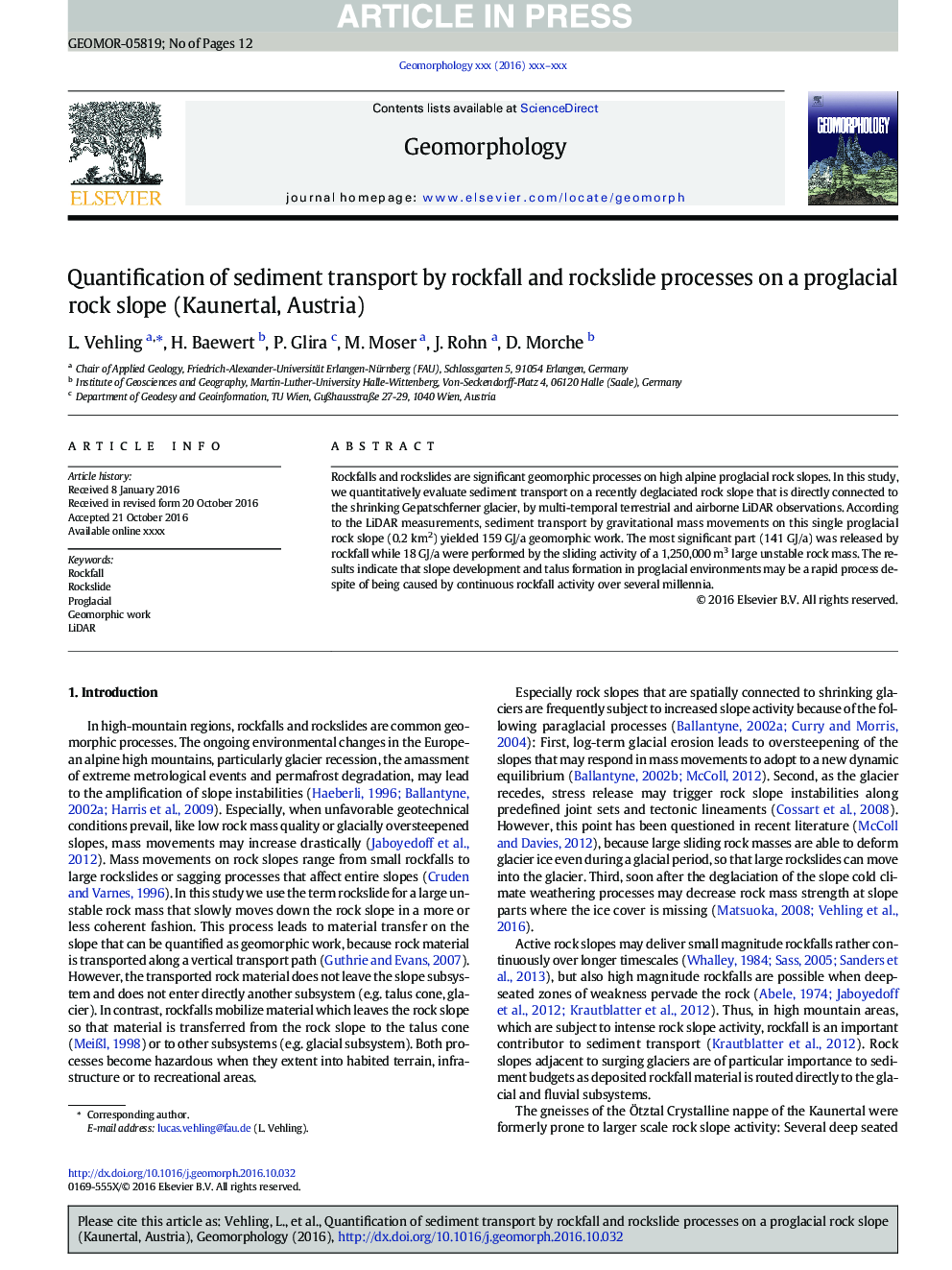| Article ID | Journal | Published Year | Pages | File Type |
|---|---|---|---|---|
| 5780985 | Geomorphology | 2017 | 12 Pages |
Abstract
Rockfalls and rockslides are significant geomorphic processes on high alpine proglacial rock slopes. In this study, we quantitatively evaluate sediment transport on a recently deglaciated rock slope that is directly connected to the shrinking Gepatschferner glacier, by multi-temporal terrestrial and airborne LiDAR observations. According to the LiDAR measurements, sediment transport by gravitational mass movements on this single proglacial rock slope (0.2Â km2) yielded 159Â GJ/a geomorphic work. The most significant part (141Â GJ/a) was released by rockfall while 18Â GJ/a were performed by the sliding activity of a 1,250,000Â m3 large unstable rock mass. The results indicate that slope development and talus formation in proglacial environments may be a rapid process despite of being caused by continuous rockfall activity over several millennia.
Related Topics
Physical Sciences and Engineering
Earth and Planetary Sciences
Earth-Surface Processes
Authors
L. Vehling, H. Baewert, P. Glira, M. Moser, J. Rohn, D. Morche,
